|
There's something so appealing about a path that just seems to invite you in. It doesn't have to be a long trail. It doesn't need to go on for miles. It doesn't have to climb to a majestic vista. But being sheltered on either side of a trail by trees, grasses, wildflowers, and streams, ahhhhh, that transports me to another world. A more peaceful, breathable world. Now that summer is in full-swing, the desire to get out and savor its best offerings feels amplified. I have lists of all sorts of wonderful places to explore. Recently, I discovered the glorious wooded trail behind a local family-friendly park in Brookfield, visited a lush lakeside trail in Whitewater, and made a stop at a thirst-quenching free flowing artesian spring well just minutes away from that lakeside trail. I spent an afternoon in Bayview reveling in the urban beauty of Humboldt Park, and took a short trip to Kenosha to visit an enchanting nature preserve just off I-94. It was the perfect spot to enjoy the coolness of the woods on a 90+ degree day. For a quick look at new additions to The Park Next Door, check out the What's New page. Here you'll find a photo gallery of newer listings, with links to the individual pages for each location. More new features are to come as well. The trails are calling!
0 Comments
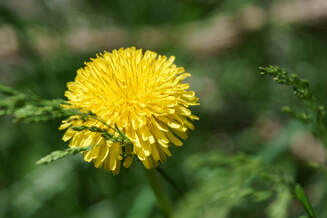 I love spending time in parks and nature preserves, admiring the plants and trees and wildlife. So it makes sense that I'm trying to incorporate those same natural things into our backyard habitat. When we moved into our house four years ago, we were lucky to get a bigger yard than our previous house, but, of course, we knew we would have to put in some work. And we've accomplished quite a bit. But, as any gardener would know, there's always something more to do. This spring was so slow in coming. Finally, the weather warmed up, and everything seemed to turn green in the blink of an eye. We observed a "No Mow May", and let the grass grow, and the dandelions flourish. The early pollinators were well-served in our habitat this season. But when it came time to mow, and get to weeding, it was a little overwhelming. Especially since our lawnmower tanked out. Fortunately, we were able to borrow one from our in-laws, and the grass is looking tidier. Well, shorter anyway. But as far as invasive weeds go, we're still working on it. 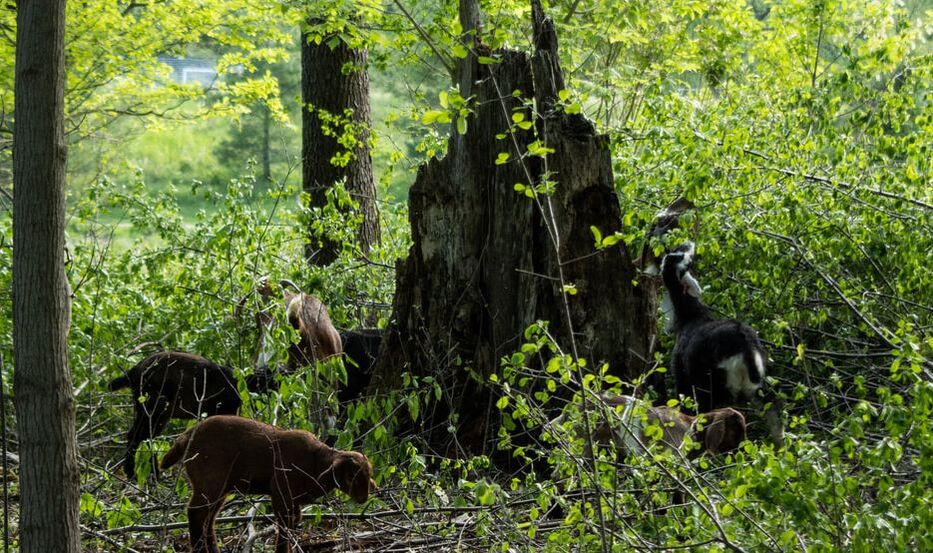 Grazing Goats Wisconsin hard at work clearing vegetation at Elm Grove Village Park Grazing Goats Wisconsin hard at work clearing vegetation at Elm Grove Village Park It made me wonder if we should hire some goats to graze in our yard. The hiring of a herd of goats has become a sound way of removing invasive weeds and overgrowth. It's environmentally beneficial - no chemicals or fossil fuels are used in the process, the goats have a minimal carbon footprint, they leave behind a beneficial, pre-pelleted quick to dissolve composting fertilizer that benefits all plants and animals in the local ecosystem, and it would be a lot easier on my back. But, seriously. I recently spent part of an afternoon at Elm Grove Village Park, where they hired a herd of goats to graze and clear a section of the park that needed work. It would have been very labor intensive, and cost prohibitive to do it any other way. The benefits were great, they were good workers, and everyone who passed by the area where the goats were grazing enjoyed their presence immensely. Both kids and adults (including me). I spoke to one of the owners of the grazing business, Grazing Goats Wisconsin. She explained to me that the goat crew at Elm Grove Park consisted of 40 goats, mostly adults, with some young ones, as they need to remain with their parents. Grazing is a family trait after all. They can forage between 150-200 lbs of roughage and vegetation per day. I watched in amazement as they moved through the area, eating leaves, chewing on sticks, invasive weeds and Buckthorn being demolished in a completely environmentally friendly way. There are a multitude of situations where grazing goats are extremely beneficial. Check out their website for more details. Here's a short gallery of some of the adorable grazing goats. We're trying hard to plant as many native plants, trees, and shrubs in our garden as we can, in an effort to benefit local wildlife and the local ecosystem. It doesn't mean we don't have non-native plants, but we try to avoid non-native invasives, and there were some plants already there when we moved in. That said, we're not experts. Gardening can be so rewarding, but it can also be overwhelming. We research and decide on plants that we think will work, and I go to the garden center, and then every bit of knowledge and research I've done just vanishes. Poof! So I wander the aisles and read labels and feel totally defeated. Usually I end up buying some annuals instead, take them home, put them in some pots, make the patio look festive and colorful. But the garden needs work. What to do? 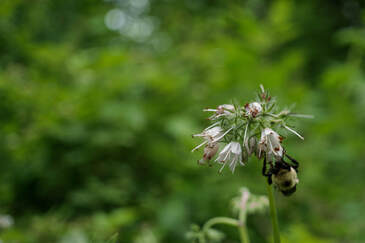 The bloom of Virginia Waterleaf providing nectar for a hungry bee The bloom of Virginia Waterleaf providing nectar for a hungry bee Get out two of my favorite books about gardening for wildlife. The Humane Gardener by Nancy Lawson, and Nature's Best Hope by Douglas W. Tallamy. Both of these books discuss the value of gardening for wildlife, and they do it in very approachable ways. They tell their stories, they break it down. They give examples. They remind you not to panic. Take it step by step. One section of garden at a time. Both are doing their best to educate and inspire gardeners of all kinds to include native plants, flowers, trees and shrubs in their landscapes. Gardening for wildlife not only benefits wildlife, but ourselves as well. Re-reading their books, I can make a list for myself. Refresh my memory as to what plants to look for. And, often, it turns out, I'm already familiar with a lot of the native plants they recommend. 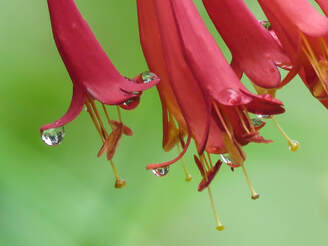 Native Coral Honeysuckle Vine attracts hummingbirds Native Coral Honeysuckle Vine attracts hummingbirds More help is usually available at local perennial farms and garden centers. When I'm really puzzled, I visit some of my favorite greenhouses for help. They will know what plants are natives, what invasives to avoid, what plants complement each other. Invaluable information. I try to go with a specific area in mind so that I can explain what I'm working with. And what I hope to accomplish. Also, never underestimate the benefit of a Smartphone and one of the plant apps available. I use PlantNet. It's been very helpful in separating weeds from the good stuff as it pops up in the garden. Two of my recent favorite local perennial garden shops are: Northwind Perennial Farm, in Burlington, and Genetti Gardens & Gallery, in Delafield. They are two distinctly different shops, but both are extremely helpful, and knowledgeable. On top of that, the grounds at each are so beautiful. I could wander at each one all day. Northwind Perennial Farm: Just wandering the incredible landscaped grounds will leave you feeling peaceful and inspired. Every time I visit I discover something new. They grow their own perennials, they do garden and landscape design, they know their stuff. The farm is charming, and the shop features all kinds of amazing nature and gardening related art and gifts. They offer different workshops and events throughout the year as well. Here's a short gallery of photos from a recent visit. Genetti Gardens & Gallery: Master gardener and sculpture artist, Joeann Genetti-Teeple, has built something beautiful and inspiring both in her gardens and her gallery. Her art studio and shop reside here, along with the gardens, which are officially considered a "pocket park". Her sculptures are integrated within the landscape, along with a multitude of other inspiring garden art, plants and decor. She sells perennial plants, and is available to hire for specialty garden design projects as well as custom sculpture and lighting designs. I could spend hours just taking in the beauty of the gardens here, and Joeann is a true delight. Here's a short gallery of a recent visit. We've got some gardening challenges ahead for us, but with resources like these, and a bit of hard work (and maybe some goats?), we'll get there. Happy Gardening, Friends!
Kimberly 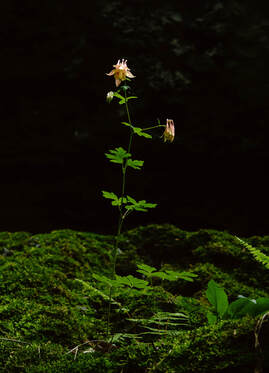 Wild Columbine was in full bloom at Ledge View County Park Wild Columbine was in full bloom at Ledge View County Park Well, it may be late, but spring has finally arrived in Southeastern Wisconsin, and the bursting of color onto the landscape is nearly intoxicating. One day there were buds on the trees, the next the trees were in full-leaved glory. Spring wildflowers began to rise, and migrating birds began to arrive. Wondrous! In March of this year, there were 180 listings of green spaces in Wisconsin on The Park Next Door. My goal was to reach 200 by the end of May. I'm happy to say that goal was reached Memorial Day Weekend! The last four entries definitely highlight the advent of spring and all its glory. And they prove, once again, that Wisconsin is a beautiful place to be. From Oconomowoc, to Whitewater, Rock County, and Horicon; from nature centers and conservancies, to county parks. All of these green spaces offer peace, beauty, fresh air, and hiking trails for the wanderer in all of us. 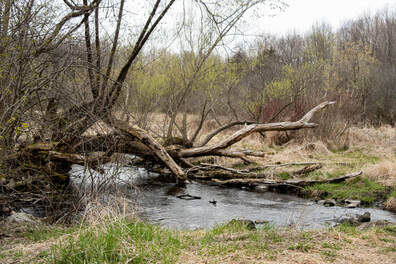 Rosenow Creek flows at the scenic entrance to Nature Hill Nature Center Rosenow Creek flows at the scenic entrance to Nature Hill Nature Center NATURE HILL NATURE CENTER - Oconomowoc I ventured out to Oconomowoc recently to hike the trails at Nature Hill Nature Center. The preserve is owned by the Oconomowoc Area School District, and is located next to Nature Hill Intermediate School. It is used by the school for outdoor/ecology education, and available to the public for trail hiking. The preserve includes prairie, forest, and some marsh area in its terrain. The forested trails, in particular, I found very lovely. With the advent of spring and summer the prairie soon will be. Read More: 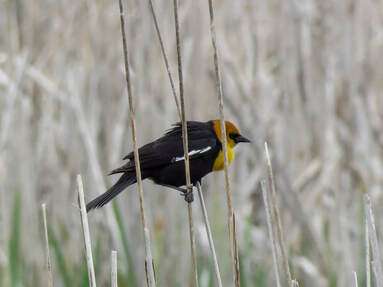 A Yellow-headed Blackbird is a sight to see at Adam Birding Conservancy A Yellow-headed Blackbird is a sight to see at Adam Birding Conservancy ADAM BIRDING CONSERVANCY - Whitewater As a birder, especially during migration seasons, I aspire to go where the birds go. Adam Birding Conservancy was founded in 2015 by David Adam, along with support from various conservation organizations. It is a privately-held 331 acre mix of prairie, wetlands, and woods, along the Bark River, in Cold Spring, about three miles north of Whitewater. They have documented over 200 species of birds within the site, along with other wildlife. Read More: 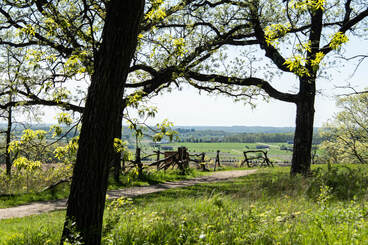 The view from the western overlook at Magnolia Bluff County Park The view from the western overlook at Magnolia Bluff County Park MAGNOLIA BLUFF COUNTY PARK - Evansville If you're looking for a handsome bluff view, you can find one (two, even) at Magnolia Bluff County Park, in Rock County. This 120 acre park, just south of Evansville, features hiking trails, horseback riding trails, and stunning views for all. Located in the hilly western upland region of Rock County, the park features beautiful rock outcroppings and vistas. Read More: 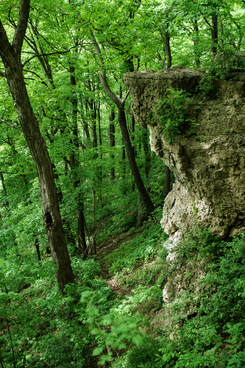 Magnificent bluffs encased in spring green at Ledge County Park Magnificent bluffs encased in spring green at Ledge County Park LEDGE COUNTY PARK - Horicon I've made many trips to Horicon over the years, most often to visit Horicon Marsh. This time we made the trip to Horicon specifically to visit Ledge County Park, and it was so worth the effort! The park is 82 acres, and lies along the Niagara Escarpment. This natural rock ledge divides the park into upper and lower areas, and, from the upper ledge, provides stunning views of the not too distant Horicon Marsh. Views of the beautiful area can be seen from both the upper and lower ledges. Read More: |
AuthorA nature lover, bird watcher, wildlife fan, amateur photographer, humane gardener, traveler, and singer of songs. I've been keeping closer to home these days, and truly discovering the beauty that lies in TheParkNextDoor. Archives
May 2024
Categories |
- Home
- THE MAGAZINE
- Celebrating 10 Years
- Blog
- Support The Park Next Door
- Achievements / Press
- Art for Your Walls & More
-
Special Features
- What's New
- Blooms Galore 2024: U-Pick Sunflowers, Cut Flowers and Lavender Fields
- Peony Perfection
- 30 Easy, Scenic Nature Walks
- Gone Fishing
- Birding Local
- A Walk On The Beach
- On The Bookshelf
- There's A Camera In My Pocket
- It's Garden Party Time
- Exploring Door County
- Tasting Door County
- Local Waterfalls Are Calling
- On The Side
- Beauty On The Escarpment
- Sacred Ground & Effigy Mounds Of Wisconsin
- Legacies Of Nature
- Escape To The Woods
- Snapshots
- Migration Song - The Magic of Bird Migration
- Dog Days In The Park
- Fabulous In Fall
- Gift Ideas For The Nature Lover
- Hiking Safely During Hunting Season - 2023 Edition
- Sparkle In The Parks & More
- Winter in Wisconsin
-
Let's Explore
-
Nature Trails
>
- 116th Street - Oak Leaf Trail - West Allis, WI
- Bald Bluff Nature Trail - Palmyra, WI
- Belle Reynolds Nature Trail - Oakfield, WI
- Eagle Nature Trail - Eagle, WI
- Emma Carlin Trail - Palmyra, WI
- Glacial Drumlin State Trail - Lake Mills, WI
- Ice Age Visitor Center Nature Trail - Campbellsport, WI
- Kettle Moraine Low Prairie Natural Area - Eagle, WI
- W. Kinnickinnic River Parkway - Milwaukee, WI
- Kohl Park Hiking Trail - Milwaukee, WI
- Paradise Springs Nature Trail - Eagle, WI
- Rice Lake Nature Trail - Whitewater, WI
- Scuppernong Springs Nature Trail - Eagle, WI
- Seminary Woods - St. Francis, WI
- Stony Ridge Nature Trail - Eagle, WI
- Stute Springs Nature Trail - Eagle, WI
- Washington Avenue Nature Trail - Sheboygan, WI
- White River State Trail - Elkhorn to Dover, WI
- Wisconsin Veteran's Memorial Riverwalk - Delafield, WI
-
Local Parks
>
- Akakawaa Park - Waukesha, WI
- Alt Bauer Park - Germantown, WI
- Anclam Park - Baileys Harbor, WI
- Astico County Park - Columbus, WI
- Asylum Point Park & Lighthouse - Oshkosh, WI
- Aurelian Springs Village Park - Palmyra, WI
- Beckman Mill County Park - Beloit, WI
- Big Hill Park - Beloit, WI
- Biwer Park - New Berlin, WI
- Bluhm Farm Park - Muskego, WI
- Brown Deer Park - Brown Deer, WI
- Calhoun Park - New Berlin, WI
- Carlin-Weld Park - Palmyra, WI
- Dorothy Carnes Park - Fort Atkinson, WI
- Carver-Roehl County Park - Clinton, WI
- Case Eagle Park - Burlington, WI
- Cave Point County Park - Sturgeon Bay, WI
- Cherney Maribel Caves County Park - Maribel, WI
- Cliffside Park - Caledonia, WI
- Copernicus Park - Milwaukee, WI
- Creekwood Park - Greenfield, WI
- Cudahy Woods - Cudahy, WI
- Denoon Park - Muskego, WI
- Dousman Stagecoach Inn Museum - Brookfield, WI
- Downtown Waupaca Parks - Waupaca, WI
- Doyne Park - Milwaukee, WI
- Ellison Bay Bluff County Park - Ellison Bay, WI
- Elm Grove Village Park - Elm Grove, WI
- Endicott Park - Brookfield, WI
- Estabrook Park - Milwaukee, WI
- Euclid Park - Milwaukee, WI
- Falk Park - Oak Creek, WI
- Frame Park - Waukesha, WI
- Franklin Woods - Franklin, WI
- Froemming Park - Franklin, WI
- Frontier Park - Butler, WI
- George K. Pinney County Park - Sturgeon Bay, WI -
- Glacier Hills County Park - Hubertus, WI
- Grant Park - South Milwaukee
- Greenfield Park - West Allis
- Grobschmidt Park - Milwaukee, WI
- Hales Corners Park, Ben Hunt Prairie and Cabin, Seneca Hale Summer Kitchen, Cobb Park - Hales Corners, WI
- Harnischfeger Park - Ixonia, WI
- Hart Park - Wauwatosa, WI
- Hartbrook Park - Hartland, WI
- Hartung Park - Wauwatosa, WI
- Hidden Lake Park - Brookfield, WI
- High Grove Park - New Berlin, WI
- Hika Bay Park - Cleveland, WI
- Hobbs Woods Nature Area - Fond Du Lac, WI
- Homestead Hollow County Park - Germantown, WI
- Honey Creek Park - West Allis, WI
- Hoyt Park - Wauwatosa, WI
- Humboldt Park - Milwaukee, WI
- Idle Isle Park - Muskego, WI
- Indian Mounds County Park - Lake Koshkonong Effigy Mounds and Trail - Fort Atkinson, WI
- Indianhead Park - Mukwonago, WI
- Jackson Park - Milwaukee, WI
- Jacobus Park - Wauwatosa, WI
- Johnstone Park - Oak Creek, WI
- Kelly Lake Park - New Berlin, WI
- Kiekhaefer Park - Fond du Lac, WI
- Kinsey Park - Brookfield, WI
- H.C. Koepp Village Park - Pewaukee, WI
- Konkel Park - Greenfield, WI
- Korth Park - Lake Mills, WI
- Krueger Park - Brookfield, WI
- Kurth Park - Muskego, WI
- Alan Kulwicki Park - Greenfield, WI
- Ledge County Park - Horicon, WI
- Lime Kiln Park - Grafton, WI
- Lime Kiln Park - Menomonee Falls, WI
- Lincoln Park - Glendale, WI
- Lions Legend Park I & II - Franklin, WI
- Lion's Park - New Berlin, WI
- Lisbon Community Park - Hartland, WI
- Lyons Park - Milwaukee, WI
- Magnolia Bluff County Park - Evansville, WI
- Malone Park - New Berlin, WI
- Manchester Hill Park - Muskego, WI
- Mangan Woods - Greendale, WI
- Mary Knoll Park - Brookfield, WI
- McCarty Park - West Allis, WI
- Mitchell Park - Brookfield, WI
- Monarch Trail / County Grounds Park - Milwaukee, WI
- Moorewood Park - Waukesha, WI
- Moorland Park - Muskego, WI
- Mound Zion Park - Brookfield, WI
- John Muir Memorial County Park - Town of Buffalo, WI
- Mukwonago Park - Mukwonago, WI
- Mush Ko Se Day Park - Fort Atkinson, WI
- Muskego Boardwalk Nature Trail - Muskego, WI
- Muskego Park - Muskego, WI
- Nashotah Park - Nashotah, WI
- Natureland County Park - Whitewater, WI
- New Berlin Historical Park - New Berlin, WI
- Nitschke Mounds County Park - Burnett, WI
- Nixon Park - Hartland, WI
- North Point Park - Sheboygan, WI
- Oerding Park - Oconomowoc, WI
- Petrifying Springs Park - Kenosha, WI
- Picnic Point Park - Oshkosh, WI
- Pleasant Valley Parks & Trails - Town of Cedarburg, WI
- Pondview Park - Greenfield, WI
- Prairie Springs Park - Pleasant Prairie, WI
- ProHealth Care Park - New Berlin, WI
- Pulaski Park - Milwaukee, WI
- Richfield Historical Park - Richfield, WI
- Ridge Run Park - West Bend, WI
- Rivers Edge Park - Menomonee Falls, WI
- Riverside Park - Watertown, WI
- Riverside Park - West Bend, WI
- Rock River Heritage County Park - Janesville, WI
- Rotary Park - Menomonee Falls, WI
- Sandy Knoll County Park - Town of Trenton, WI
- Saveland Park - Milwaukee, WI
- Schoen Laufen Park - Germantown, WI
- Schoetz Park - Village of Hales Corners, WI
- Schoolhouse Beach - Washington Island, WI
- Scout Lake Park - Greendale, WI
- Sheboygan Indian Mound Park - Sheboygan, WI
- Simmons Woods Park - Pewaukee, WI
- South Shore Park - Bayview, WI
- Spassland Park - Germantown, WI
- Springs Park - Delavan, WI
- Sunset Beach County Park - Sturgeon Bay, WI
- Swan Park - Beaver Dam, WI
- Three Bridges Park - Milwaukee, WI
- Turtle Creek Parkway / Tiffany Bridge - Clinton, WI
- Tyranena Park - Lake Mills, WI
- Valley View Park - New Berlin, WI
- Veterans Memorial Park - Grafton, WI
- Viking County Park - Stoughton, WI
- Virmond Park - Mequon, WI
- Warnimont Park - Cudahy, WI
- Washington Park - Milwaukee, WI
- Weatherstone Park - New Berlin, WI
- Wequiock Falls Park - Green Bay, WI
- Weston Antique Apple Orchard & Isabelle Weston Memorial Trail - New Berlin, WI
- White River County Park - Walworth County
- Whitnall Park - Franklin, WI
- Wilson Park - Milwaukee, WI
- Wind Point Lighthouse - Racine, WI
- Ken Windl Park - Franklin, WI
- Xenobia Springs Park - Palmyra, WI
-
Nature Preserves
>
- Adam Birding Conservancy - Whitewater, WI
- Badertscher Preserve - Muskego, WI
- Joyce M. Baer & George J. Socha Conservancy - Marshall, WI
- Bay Beach Wildlife Sanctuary - Green Bay, WI
- Beulah Bluff Preserve - East Troy, WI
- Beulah Bog - East Troy, WI
- Blue Heron Wildlife Sanctuary - Saukville, WI
- Bratt Woods - Grafton, WI
- Burlington School Forest - Burlington, WI
- Calhoun Creek Prairie - New Berlin, WI
- Cedarburg Bog - Saukville, WI
- Chiwaukee Prairie - Kenosha, WI
- Conservancy For Healing And Heritage - Franklin, WI
- Robert O Cook Arboretum - Janesville, WI
- Crooked Creek Nature Preserve - East Troy, WI
- Crossroads At Big Creek - Sturgeon Bay
- Deer Creek Sanctuary - New Berlin, WI
- Delavan Memorial Arboretum - Delavan, WI
- Donges Bay Gorge - Mequon, WI
- Emerald Preserve - Oak Creek, WI
- Engel Conservation Area - Muskego, WI
- Faville Grove Sanctuary - Lake Mills, WI
- Fellenz Woods - West Bend, WI
- Flowing Well - Whitewater, WI
- Forest Beach Migratory Preserve - Port Washington, WI
- Forest Exploration Center - Wauwatosa, WI
- Fox River Sanctuary - Waukesha, WI
- John S. Garman Nature Preserve - Waterloo, WI
- Garrison's Glen - Mequon, WI
- Genesee Oak Opening and Fen - Mukwonago, North Prairie WI
- Gordon Tabor Memorial Woods - Caledonia, WI
- Gottfried Prairie and Arboretum - Fond du Lac, WI
- Grasslyn Nature Preserve - Mequon, WI
- Greenway Arboretum - Fond du Lac, WI
- Grootemaat Nature Preserve - Greendale, WI
- Hartland Marsh Preserve - Village of Hartland, WI
- Hawthorn Glen - Milwaukee, WI
- Hawthorn Hollow Nature Sanctuary and Arboretum - Kenosha, WI
- Hildebrand Nature Conservancy - Village of Fontana-On-Geneva Lake, WI
- Horicon Marsh State Wildlife Area - Horicon, WI
- Huiras Lake Natural Area - Fredonia, WI
- Kishwauketoe Nature Conservancy - Williams Bay, WI
- Kurtz Woods State Natural Area - Grafton, WI
- Lac Lawrann Conservancy - West Bend, WI
- Lakeshore Nature Preserve - Madison, WI
- Ledge View Nature Center - Chilton, WI
- Lion's Den Nature Preserve - Grafton, WI
- Lois Jensen Nature Preserve - Delafield, WI
- Lulu Lake Nature Preserve - East Troy, WI
- John Margis Jr. Wildlife Area - Burlington, WI
- Maywood Environmental Park - Sheboygan, WI
- Jean McGraw Memorial Nature Preserve - Kenosha, WI
- Mequon Nature Preserve - Mequon, WI
- Moely Prairie - Prairie Du Sac, WI
- Nature Hill Nature Center - Oconomowoc, WI
- Ned Hollister Wetlands Conservancy - Delavan, WI
- Newell and Ann Meyer Nature Preservel - Eagle, WI
- Nicholson Wildlife Refuge - Franksville, WI
- Oakfield Ledge State Natural Area - Oakfield, WI
- Oconomowoc River Conservancy Park - Merton, WI
- Parry Spring - Dousman, WI
- Pavcek Preserve - Hartford, WI
- Petersen Island Woods Preserve - Elkhorn, WI
- Pheasant Branch Creek Conservancy - Middleton, WI
- Pickerel Lake Fen Preserve - East Troy, WI
- Pope Farm Conservancy - Verona, WI
- Price Park Conservancy - Elkhorn, WI
- Pukaite Woods Nature Preserve / Mequon Rotary Park - Mequon, WI
- Retzer Nature Center - Waukesha, WI
- The Ridges Sanctuary - Baileys Harbor, WI
- River Bend Nature Center - Racine, WI
- Riveredge Nature Center - Saukville, WI
- Helen Rohner Children's Fishing Park - Williams Bay, WI-
- Saller Woods - Rochester, WI
- Sanctuary Woods - Wauwatosa, WI
- Sauk Creek Nature Preserve - Port Washington, WI
- Schlitz Audubon Nature Center - Milwaukee, WI
- Schmeekle Reserve - Stevens Point, WI
- Seno Woodland Center - Burlington, WI
- Spirit Lake Nature Preserve - Mequon, WI
- Spruce Lake Bog - Campbellsport, WI
- Stigler Nature Preserve - New Berlin, WI
- Trinity Creek Wetland Habitat - Mequon, WI
- UW-Waukesha Field Station - Oconomowoc, WI
- Van der Brohe Arboretum - Two Rivers, WI
- Vernon Marsh Wildlife Area - Mukwonago, WI
- Vernon Wildlife Area - Waterford, WI
- Wadewitz Nature Camp - Village of Rochester, WI
- Wehmhoff Woodland Preserve - Burlington, WI
- Wehr Nature Center - Franklin, WI
- Whitnall School Forest - Greenfield, WI
- Woodland Dunes Nature Center & Preserve - Two Rivers, WI
- Zeloski Marsh - Cambridge, WI
-
State Parks
>
- Aztalan State Park - Aztalan, WI
- Baxter's Hollow State Natural Area - Sauk City, WI
- Big Foot Beach State Park - Lake Geneva, WI
- Bong State Recreation Area - Kansasville, WI
- C. D. Besadny Fish and Wildlife Area - Kewaunee, WI
- Cadiz Springs State Recreation Area - New Glarus, WI
- Devil's Lake State Park - Baraboo, WI
- Harrington Beach State Park - Belgium, WI
- Hartman Creek State Park - Waupaca, WI
- Havenwoods State Forest - Milwaukee, WI
- High Cliff State Park - Sherwood, WI
- Kohler-Andrae State Park - Sheboygan, WI
- La Budde State Natural Area - Ice Age Trail Segment - Plymouth, WI
- Lake Kegonsa State Park - Stoughton, WI
- Lakeshore State Park - Milwaukee, WI
- Lapham Peak State Park - Delafield, WI
- Lizard Mound State Park - Farmington, WI
- Mauthe Lake State Recreation Area - Campbellsport, WI
- Mukwonago River Unit of the Kettle Moraine State Forest - Mukwonago, WI
- Natural Bridge State Park - North Freedom, WI
- Newport State Park - Ellison Bay, WI
- Peninsula State Park - Fish Creek, WI
- Pike Lake State Park - Hartford, WI
- Point Beach State Forest - Two Rivers, WI
- Potawatomi State Park - Sturgeon Bay, WI
-
Sculpture Gardens and Conservancies
>
- Bobrowitz Sculpture Garden - Colgate, WI
- Boerner Botanical Gardens - Hales Corners, WI
- Nick Engelbert's Grandview - Hollandale, WI
- Franconia Sculpture Park - Shafer, MN
- The Garden Door - Sturgeon Bay, WI
- Greendale Children's Garden - Greendale, WI
- Labyrinth Garden Earth Sculpture - West Bend, WI
- Margie's Garden - Hales Corners, WI
- Mitchell Park Horticultural Conservancy - Milwaukee, WI
- New Life Lavender & Cherry Farm - Baraboo, WI
- Olbrich Botanical Gardens - Madison, WI
- M. Schettl Sales - Sculpture and Oddities
- Rotary Botanical Gardens - Janesville, WI
- Sisson's Peony Garden - Rosendale, WI
- Stavkirke - Washington Island, WI
- Stevens Point Sculpture Park - Stevens Point, WI
- James Tellen Woodland Sculpture Garden - Town of Wilson, WI
- West Of The Lake Gardens - Manitowoc, WI
- Yerkes Observatory - Williams Bay, WI
-
Cemeteries
>
- Calvary Cemetery - Milwaukee, WI
- Forest Home Cemetery - Milwaukee, WI
- Highland Memorial Park Cemetery - New Berlin, WI
- La Belle Cemetery - Oconomowoc, WI
- Mount Olivet Cemetery - Milwaukee, WI
- New Berlin Center Cemetery - New Berlin, WI
- Oak Hill Cemetery - Lake Geneva, WI
- Riverside Cemetery - Oshkosh, WI
- St. Adalbert Cemetery - Milwaukee, WI
-
Nature Trails
>
- Gardening for Wildlife
- Detours, Links & More
- Home
- THE MAGAZINE
- Celebrating 10 Years
- Blog
- Support The Park Next Door
- Achievements / Press
- Art for Your Walls & More
-
Special Features
- What's New
- Blooms Galore 2024: U-Pick Sunflowers, Cut Flowers and Lavender Fields
- Peony Perfection
- 30 Easy, Scenic Nature Walks
- Gone Fishing
- Birding Local
- A Walk On The Beach
- On The Bookshelf
- There's A Camera In My Pocket
- It's Garden Party Time
- Exploring Door County
- Tasting Door County
- Local Waterfalls Are Calling
- On The Side
- Beauty On The Escarpment
- Sacred Ground & Effigy Mounds Of Wisconsin
- Legacies Of Nature
- Escape To The Woods
- Snapshots
- Migration Song - The Magic of Bird Migration
- Dog Days In The Park
- Fabulous In Fall
- Gift Ideas For The Nature Lover
- Hiking Safely During Hunting Season - 2023 Edition
- Sparkle In The Parks & More
- Winter in Wisconsin
-
Let's Explore
-
Nature Trails
>
- 116th Street - Oak Leaf Trail - West Allis, WI
- Bald Bluff Nature Trail - Palmyra, WI
- Belle Reynolds Nature Trail - Oakfield, WI
- Eagle Nature Trail - Eagle, WI
- Emma Carlin Trail - Palmyra, WI
- Glacial Drumlin State Trail - Lake Mills, WI
- Ice Age Visitor Center Nature Trail - Campbellsport, WI
- Kettle Moraine Low Prairie Natural Area - Eagle, WI
- W. Kinnickinnic River Parkway - Milwaukee, WI
- Kohl Park Hiking Trail - Milwaukee, WI
- Paradise Springs Nature Trail - Eagle, WI
- Rice Lake Nature Trail - Whitewater, WI
- Scuppernong Springs Nature Trail - Eagle, WI
- Seminary Woods - St. Francis, WI
- Stony Ridge Nature Trail - Eagle, WI
- Stute Springs Nature Trail - Eagle, WI
- Washington Avenue Nature Trail - Sheboygan, WI
- White River State Trail - Elkhorn to Dover, WI
- Wisconsin Veteran's Memorial Riverwalk - Delafield, WI
-
Local Parks
>
- Akakawaa Park - Waukesha, WI
- Alt Bauer Park - Germantown, WI
- Anclam Park - Baileys Harbor, WI
- Astico County Park - Columbus, WI
- Asylum Point Park & Lighthouse - Oshkosh, WI
- Aurelian Springs Village Park - Palmyra, WI
- Beckman Mill County Park - Beloit, WI
- Big Hill Park - Beloit, WI
- Biwer Park - New Berlin, WI
- Bluhm Farm Park - Muskego, WI
- Brown Deer Park - Brown Deer, WI
- Calhoun Park - New Berlin, WI
- Carlin-Weld Park - Palmyra, WI
- Dorothy Carnes Park - Fort Atkinson, WI
- Carver-Roehl County Park - Clinton, WI
- Case Eagle Park - Burlington, WI
- Cave Point County Park - Sturgeon Bay, WI
- Cherney Maribel Caves County Park - Maribel, WI
- Cliffside Park - Caledonia, WI
- Copernicus Park - Milwaukee, WI
- Creekwood Park - Greenfield, WI
- Cudahy Woods - Cudahy, WI
- Denoon Park - Muskego, WI
- Dousman Stagecoach Inn Museum - Brookfield, WI
- Downtown Waupaca Parks - Waupaca, WI
- Doyne Park - Milwaukee, WI
- Ellison Bay Bluff County Park - Ellison Bay, WI
- Elm Grove Village Park - Elm Grove, WI
- Endicott Park - Brookfield, WI
- Estabrook Park - Milwaukee, WI
- Euclid Park - Milwaukee, WI
- Falk Park - Oak Creek, WI
- Frame Park - Waukesha, WI
- Franklin Woods - Franklin, WI
- Froemming Park - Franklin, WI
- Frontier Park - Butler, WI
- George K. Pinney County Park - Sturgeon Bay, WI -
- Glacier Hills County Park - Hubertus, WI
- Grant Park - South Milwaukee
- Greenfield Park - West Allis
- Grobschmidt Park - Milwaukee, WI
- Hales Corners Park, Ben Hunt Prairie and Cabin, Seneca Hale Summer Kitchen, Cobb Park - Hales Corners, WI
- Harnischfeger Park - Ixonia, WI
- Hart Park - Wauwatosa, WI
- Hartbrook Park - Hartland, WI
- Hartung Park - Wauwatosa, WI
- Hidden Lake Park - Brookfield, WI
- High Grove Park - New Berlin, WI
- Hika Bay Park - Cleveland, WI
- Hobbs Woods Nature Area - Fond Du Lac, WI
- Homestead Hollow County Park - Germantown, WI
- Honey Creek Park - West Allis, WI
- Hoyt Park - Wauwatosa, WI
- Humboldt Park - Milwaukee, WI
- Idle Isle Park - Muskego, WI
- Indian Mounds County Park - Lake Koshkonong Effigy Mounds and Trail - Fort Atkinson, WI
- Indianhead Park - Mukwonago, WI
- Jackson Park - Milwaukee, WI
- Jacobus Park - Wauwatosa, WI
- Johnstone Park - Oak Creek, WI
- Kelly Lake Park - New Berlin, WI
- Kiekhaefer Park - Fond du Lac, WI
- Kinsey Park - Brookfield, WI
- H.C. Koepp Village Park - Pewaukee, WI
- Konkel Park - Greenfield, WI
- Korth Park - Lake Mills, WI
- Krueger Park - Brookfield, WI
- Kurth Park - Muskego, WI
- Alan Kulwicki Park - Greenfield, WI
- Ledge County Park - Horicon, WI
- Lime Kiln Park - Grafton, WI
- Lime Kiln Park - Menomonee Falls, WI
- Lincoln Park - Glendale, WI
- Lions Legend Park I & II - Franklin, WI
- Lion's Park - New Berlin, WI
- Lisbon Community Park - Hartland, WI
- Lyons Park - Milwaukee, WI
- Magnolia Bluff County Park - Evansville, WI
- Malone Park - New Berlin, WI
- Manchester Hill Park - Muskego, WI
- Mangan Woods - Greendale, WI
- Mary Knoll Park - Brookfield, WI
- McCarty Park - West Allis, WI
- Mitchell Park - Brookfield, WI
- Monarch Trail / County Grounds Park - Milwaukee, WI
- Moorewood Park - Waukesha, WI
- Moorland Park - Muskego, WI
- Mound Zion Park - Brookfield, WI
- John Muir Memorial County Park - Town of Buffalo, WI
- Mukwonago Park - Mukwonago, WI
- Mush Ko Se Day Park - Fort Atkinson, WI
- Muskego Boardwalk Nature Trail - Muskego, WI
- Muskego Park - Muskego, WI
- Nashotah Park - Nashotah, WI
- Natureland County Park - Whitewater, WI
- New Berlin Historical Park - New Berlin, WI
- Nitschke Mounds County Park - Burnett, WI
- Nixon Park - Hartland, WI
- North Point Park - Sheboygan, WI
- Oerding Park - Oconomowoc, WI
- Petrifying Springs Park - Kenosha, WI
- Picnic Point Park - Oshkosh, WI
- Pleasant Valley Parks & Trails - Town of Cedarburg, WI
- Pondview Park - Greenfield, WI
- Prairie Springs Park - Pleasant Prairie, WI
- ProHealth Care Park - New Berlin, WI
- Pulaski Park - Milwaukee, WI
- Richfield Historical Park - Richfield, WI
- Ridge Run Park - West Bend, WI
- Rivers Edge Park - Menomonee Falls, WI
- Riverside Park - Watertown, WI
- Riverside Park - West Bend, WI
- Rock River Heritage County Park - Janesville, WI
- Rotary Park - Menomonee Falls, WI
- Sandy Knoll County Park - Town of Trenton, WI
- Saveland Park - Milwaukee, WI
- Schoen Laufen Park - Germantown, WI
- Schoetz Park - Village of Hales Corners, WI
- Schoolhouse Beach - Washington Island, WI
- Scout Lake Park - Greendale, WI
- Sheboygan Indian Mound Park - Sheboygan, WI
- Simmons Woods Park - Pewaukee, WI
- South Shore Park - Bayview, WI
- Spassland Park - Germantown, WI
- Springs Park - Delavan, WI
- Sunset Beach County Park - Sturgeon Bay, WI
- Swan Park - Beaver Dam, WI
- Three Bridges Park - Milwaukee, WI
- Turtle Creek Parkway / Tiffany Bridge - Clinton, WI
- Tyranena Park - Lake Mills, WI
- Valley View Park - New Berlin, WI
- Veterans Memorial Park - Grafton, WI
- Viking County Park - Stoughton, WI
- Virmond Park - Mequon, WI
- Warnimont Park - Cudahy, WI
- Washington Park - Milwaukee, WI
- Weatherstone Park - New Berlin, WI
- Wequiock Falls Park - Green Bay, WI
- Weston Antique Apple Orchard & Isabelle Weston Memorial Trail - New Berlin, WI
- White River County Park - Walworth County
- Whitnall Park - Franklin, WI
- Wilson Park - Milwaukee, WI
- Wind Point Lighthouse - Racine, WI
- Ken Windl Park - Franklin, WI
- Xenobia Springs Park - Palmyra, WI
-
Nature Preserves
>
- Adam Birding Conservancy - Whitewater, WI
- Badertscher Preserve - Muskego, WI
- Joyce M. Baer & George J. Socha Conservancy - Marshall, WI
- Bay Beach Wildlife Sanctuary - Green Bay, WI
- Beulah Bluff Preserve - East Troy, WI
- Beulah Bog - East Troy, WI
- Blue Heron Wildlife Sanctuary - Saukville, WI
- Bratt Woods - Grafton, WI
- Burlington School Forest - Burlington, WI
- Calhoun Creek Prairie - New Berlin, WI
- Cedarburg Bog - Saukville, WI
- Chiwaukee Prairie - Kenosha, WI
- Conservancy For Healing And Heritage - Franklin, WI
- Robert O Cook Arboretum - Janesville, WI
- Crooked Creek Nature Preserve - East Troy, WI
- Crossroads At Big Creek - Sturgeon Bay
- Deer Creek Sanctuary - New Berlin, WI
- Delavan Memorial Arboretum - Delavan, WI
- Donges Bay Gorge - Mequon, WI
- Emerald Preserve - Oak Creek, WI
- Engel Conservation Area - Muskego, WI
- Faville Grove Sanctuary - Lake Mills, WI
- Fellenz Woods - West Bend, WI
- Flowing Well - Whitewater, WI
- Forest Beach Migratory Preserve - Port Washington, WI
- Forest Exploration Center - Wauwatosa, WI
- Fox River Sanctuary - Waukesha, WI
- John S. Garman Nature Preserve - Waterloo, WI
- Garrison's Glen - Mequon, WI
- Genesee Oak Opening and Fen - Mukwonago, North Prairie WI
- Gordon Tabor Memorial Woods - Caledonia, WI
- Gottfried Prairie and Arboretum - Fond du Lac, WI
- Grasslyn Nature Preserve - Mequon, WI
- Greenway Arboretum - Fond du Lac, WI
- Grootemaat Nature Preserve - Greendale, WI
- Hartland Marsh Preserve - Village of Hartland, WI
- Hawthorn Glen - Milwaukee, WI
- Hawthorn Hollow Nature Sanctuary and Arboretum - Kenosha, WI
- Hildebrand Nature Conservancy - Village of Fontana-On-Geneva Lake, WI
- Horicon Marsh State Wildlife Area - Horicon, WI
- Huiras Lake Natural Area - Fredonia, WI
- Kishwauketoe Nature Conservancy - Williams Bay, WI
- Kurtz Woods State Natural Area - Grafton, WI
- Lac Lawrann Conservancy - West Bend, WI
- Lakeshore Nature Preserve - Madison, WI
- Ledge View Nature Center - Chilton, WI
- Lion's Den Nature Preserve - Grafton, WI
- Lois Jensen Nature Preserve - Delafield, WI
- Lulu Lake Nature Preserve - East Troy, WI
- John Margis Jr. Wildlife Area - Burlington, WI
- Maywood Environmental Park - Sheboygan, WI
- Jean McGraw Memorial Nature Preserve - Kenosha, WI
- Mequon Nature Preserve - Mequon, WI
- Moely Prairie - Prairie Du Sac, WI
- Nature Hill Nature Center - Oconomowoc, WI
- Ned Hollister Wetlands Conservancy - Delavan, WI
- Newell and Ann Meyer Nature Preservel - Eagle, WI
- Nicholson Wildlife Refuge - Franksville, WI
- Oakfield Ledge State Natural Area - Oakfield, WI
- Oconomowoc River Conservancy Park - Merton, WI
- Parry Spring - Dousman, WI
- Pavcek Preserve - Hartford, WI
- Petersen Island Woods Preserve - Elkhorn, WI
- Pheasant Branch Creek Conservancy - Middleton, WI
- Pickerel Lake Fen Preserve - East Troy, WI
- Pope Farm Conservancy - Verona, WI
- Price Park Conservancy - Elkhorn, WI
- Pukaite Woods Nature Preserve / Mequon Rotary Park - Mequon, WI
- Retzer Nature Center - Waukesha, WI
- The Ridges Sanctuary - Baileys Harbor, WI
- River Bend Nature Center - Racine, WI
- Riveredge Nature Center - Saukville, WI
- Helen Rohner Children's Fishing Park - Williams Bay, WI-
- Saller Woods - Rochester, WI
- Sanctuary Woods - Wauwatosa, WI
- Sauk Creek Nature Preserve - Port Washington, WI
- Schlitz Audubon Nature Center - Milwaukee, WI
- Schmeekle Reserve - Stevens Point, WI
- Seno Woodland Center - Burlington, WI
- Spirit Lake Nature Preserve - Mequon, WI
- Spruce Lake Bog - Campbellsport, WI
- Stigler Nature Preserve - New Berlin, WI
- Trinity Creek Wetland Habitat - Mequon, WI
- UW-Waukesha Field Station - Oconomowoc, WI
- Van der Brohe Arboretum - Two Rivers, WI
- Vernon Marsh Wildlife Area - Mukwonago, WI
- Vernon Wildlife Area - Waterford, WI
- Wadewitz Nature Camp - Village of Rochester, WI
- Wehmhoff Woodland Preserve - Burlington, WI
- Wehr Nature Center - Franklin, WI
- Whitnall School Forest - Greenfield, WI
- Woodland Dunes Nature Center & Preserve - Two Rivers, WI
- Zeloski Marsh - Cambridge, WI
-
State Parks
>
- Aztalan State Park - Aztalan, WI
- Baxter's Hollow State Natural Area - Sauk City, WI
- Big Foot Beach State Park - Lake Geneva, WI
- Bong State Recreation Area - Kansasville, WI
- C. D. Besadny Fish and Wildlife Area - Kewaunee, WI
- Cadiz Springs State Recreation Area - New Glarus, WI
- Devil's Lake State Park - Baraboo, WI
- Harrington Beach State Park - Belgium, WI
- Hartman Creek State Park - Waupaca, WI
- Havenwoods State Forest - Milwaukee, WI
- High Cliff State Park - Sherwood, WI
- Kohler-Andrae State Park - Sheboygan, WI
- La Budde State Natural Area - Ice Age Trail Segment - Plymouth, WI
- Lake Kegonsa State Park - Stoughton, WI
- Lakeshore State Park - Milwaukee, WI
- Lapham Peak State Park - Delafield, WI
- Lizard Mound State Park - Farmington, WI
- Mauthe Lake State Recreation Area - Campbellsport, WI
- Mukwonago River Unit of the Kettle Moraine State Forest - Mukwonago, WI
- Natural Bridge State Park - North Freedom, WI
- Newport State Park - Ellison Bay, WI
- Peninsula State Park - Fish Creek, WI
- Pike Lake State Park - Hartford, WI
- Point Beach State Forest - Two Rivers, WI
- Potawatomi State Park - Sturgeon Bay, WI
-
Sculpture Gardens and Conservancies
>
- Bobrowitz Sculpture Garden - Colgate, WI
- Boerner Botanical Gardens - Hales Corners, WI
- Nick Engelbert's Grandview - Hollandale, WI
- Franconia Sculpture Park - Shafer, MN
- The Garden Door - Sturgeon Bay, WI
- Greendale Children's Garden - Greendale, WI
- Labyrinth Garden Earth Sculpture - West Bend, WI
- Margie's Garden - Hales Corners, WI
- Mitchell Park Horticultural Conservancy - Milwaukee, WI
- New Life Lavender & Cherry Farm - Baraboo, WI
- Olbrich Botanical Gardens - Madison, WI
- M. Schettl Sales - Sculpture and Oddities
- Rotary Botanical Gardens - Janesville, WI
- Sisson's Peony Garden - Rosendale, WI
- Stavkirke - Washington Island, WI
- Stevens Point Sculpture Park - Stevens Point, WI
- James Tellen Woodland Sculpture Garden - Town of Wilson, WI
- West Of The Lake Gardens - Manitowoc, WI
- Yerkes Observatory - Williams Bay, WI
-
Cemeteries
>
- Calvary Cemetery - Milwaukee, WI
- Forest Home Cemetery - Milwaukee, WI
- Highland Memorial Park Cemetery - New Berlin, WI
- La Belle Cemetery - Oconomowoc, WI
- Mount Olivet Cemetery - Milwaukee, WI
- New Berlin Center Cemetery - New Berlin, WI
- Oak Hill Cemetery - Lake Geneva, WI
- Riverside Cemetery - Oshkosh, WI
- St. Adalbert Cemetery - Milwaukee, WI
-
Nature Trails
>
- Gardening for Wildlife
- Detours, Links & More

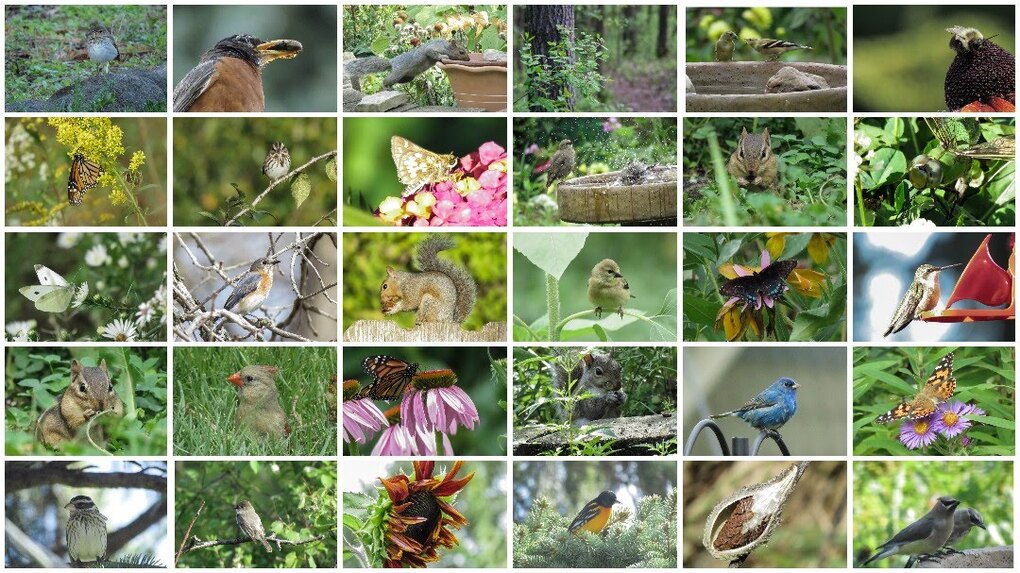
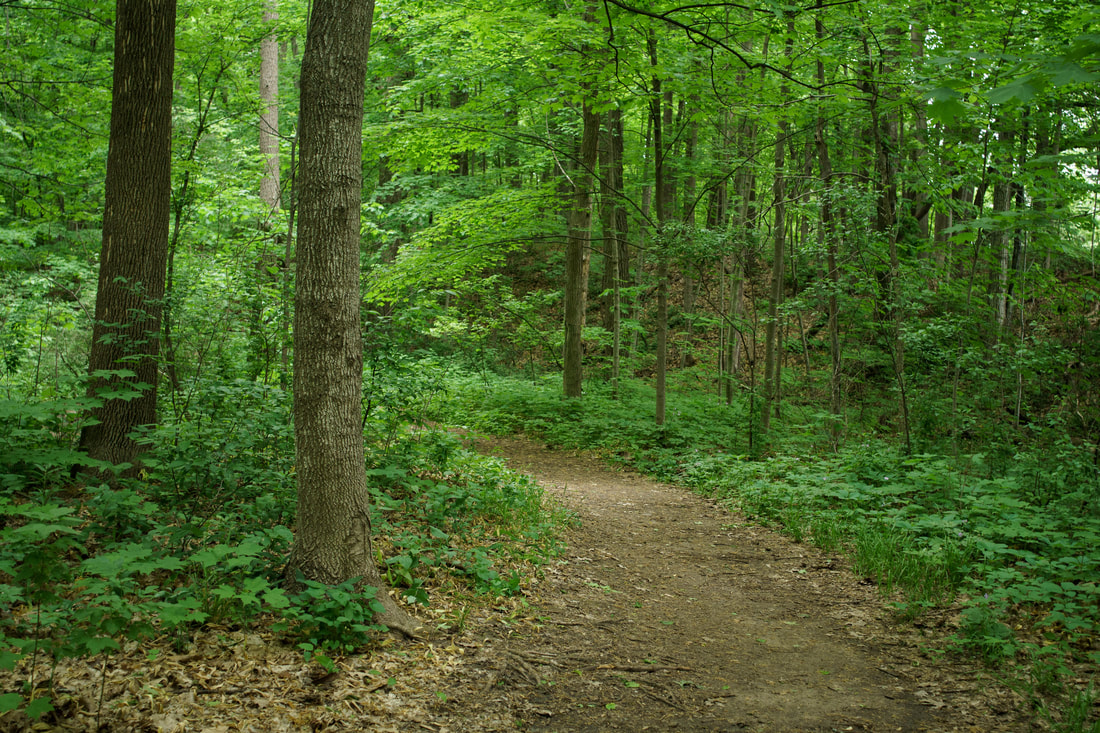
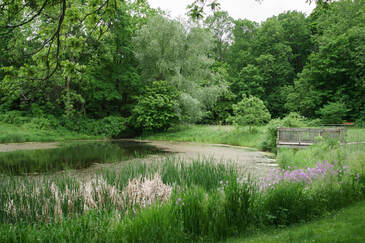
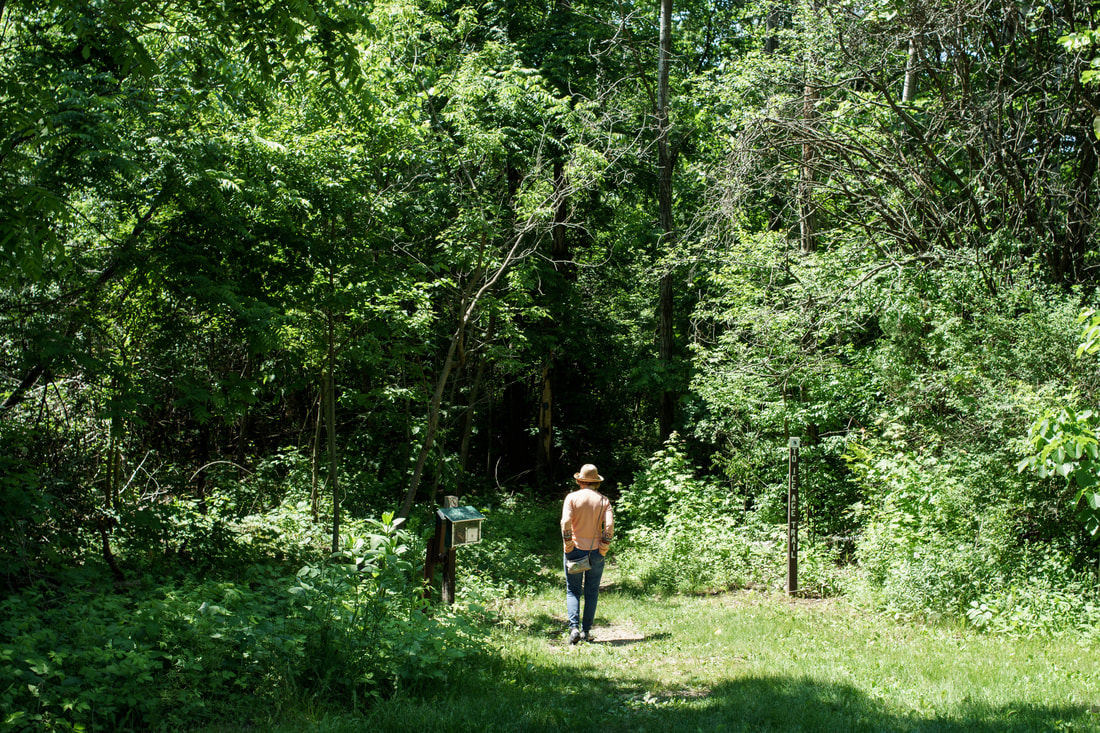

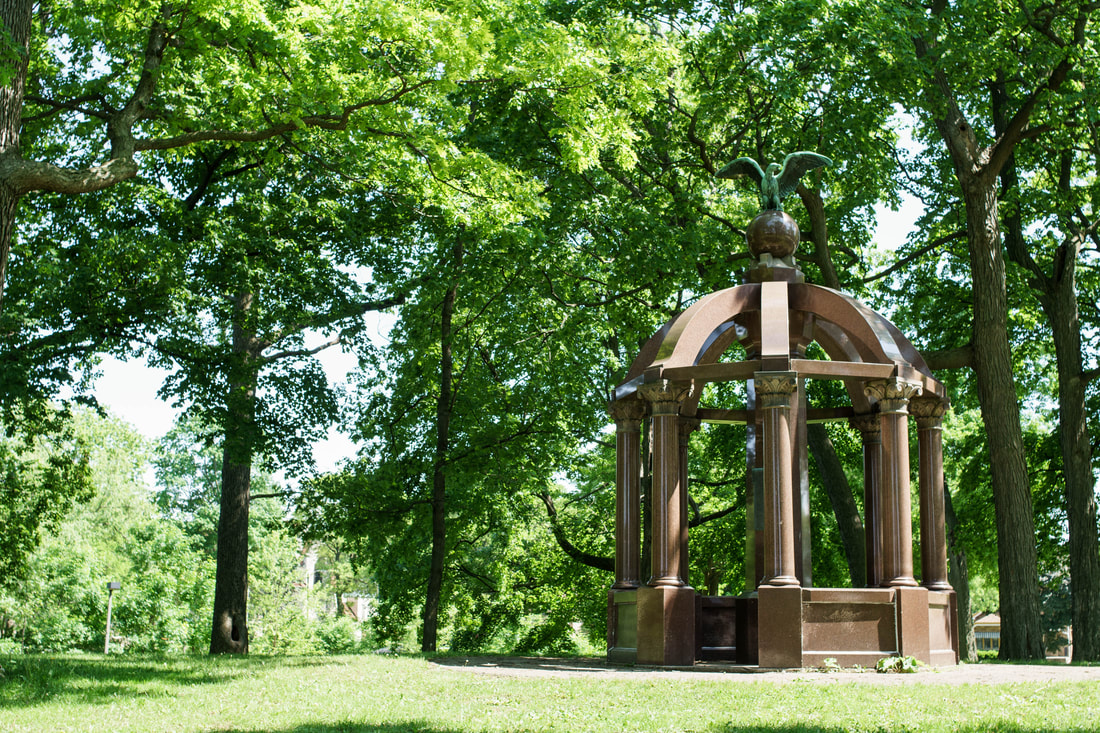
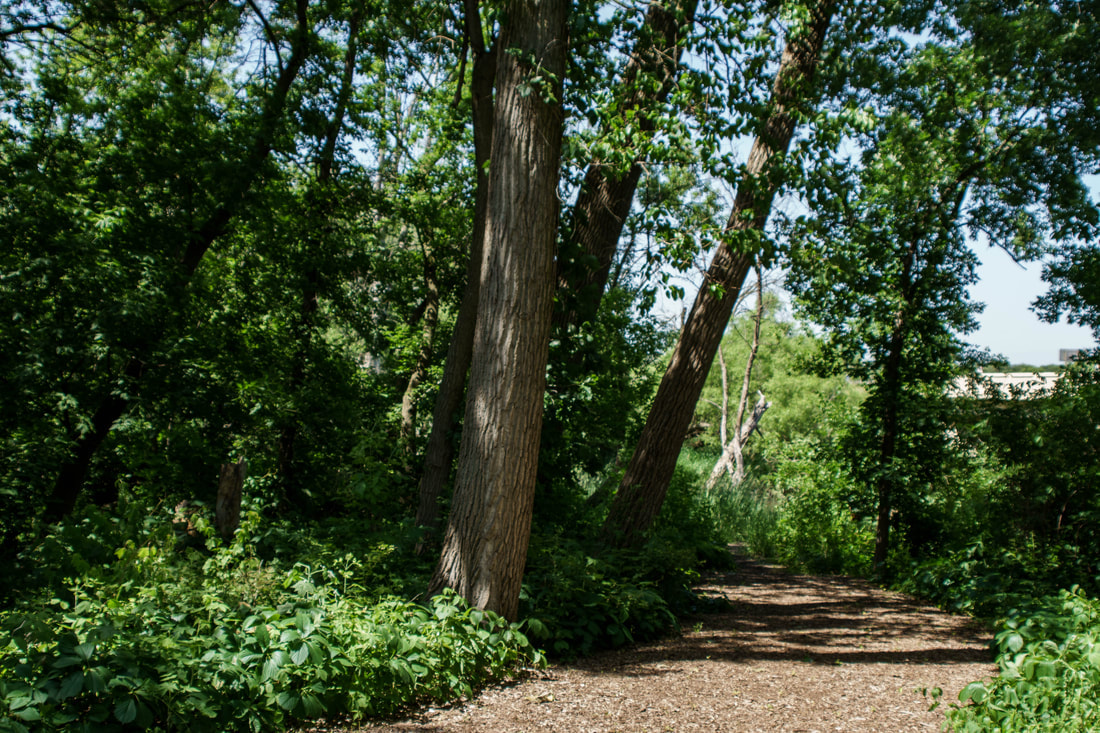

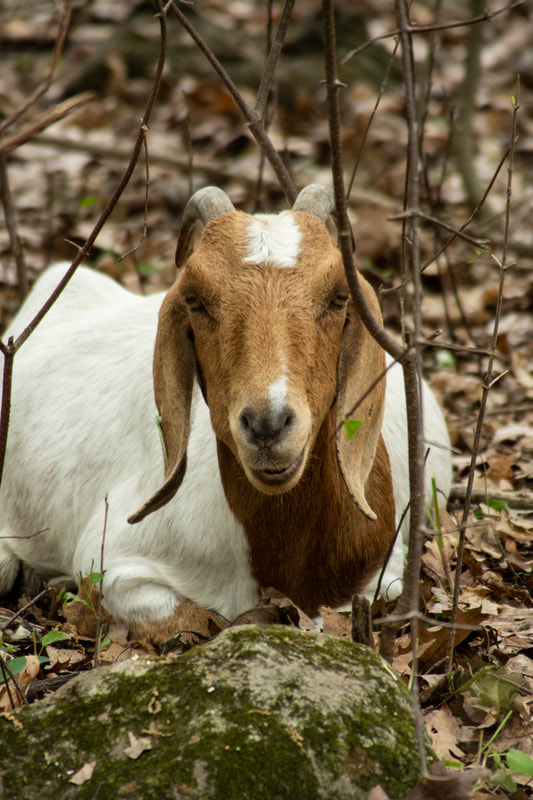
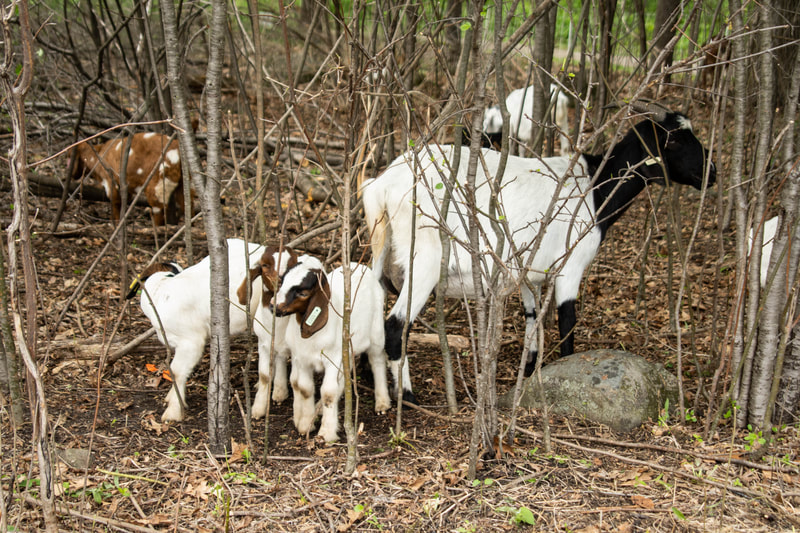
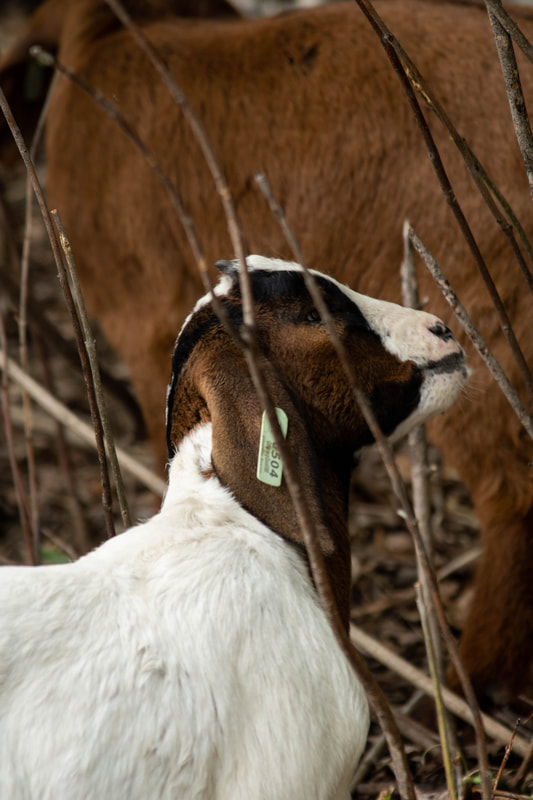
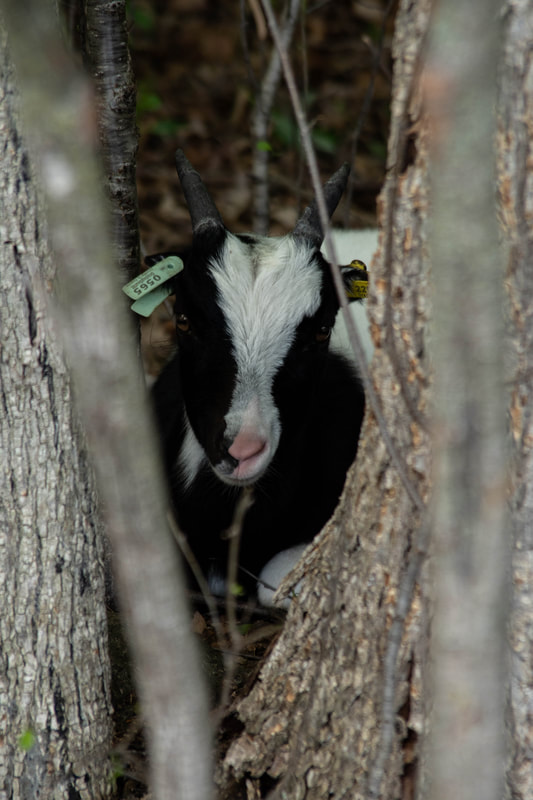
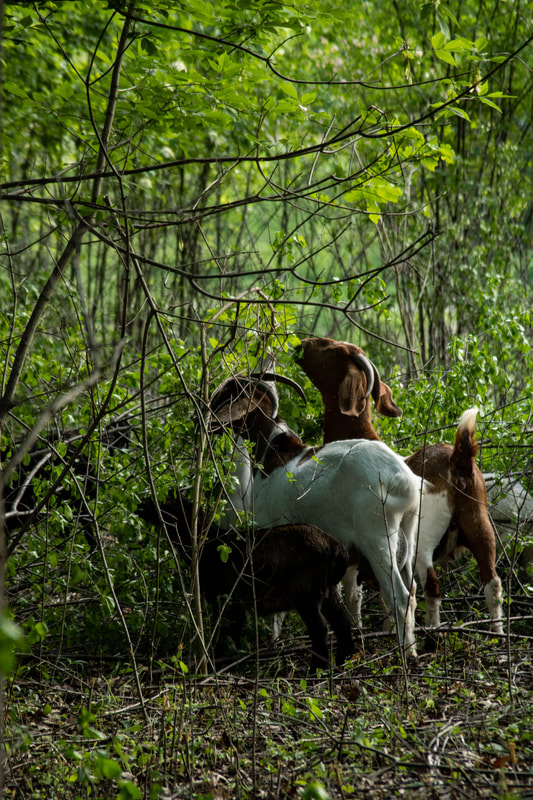
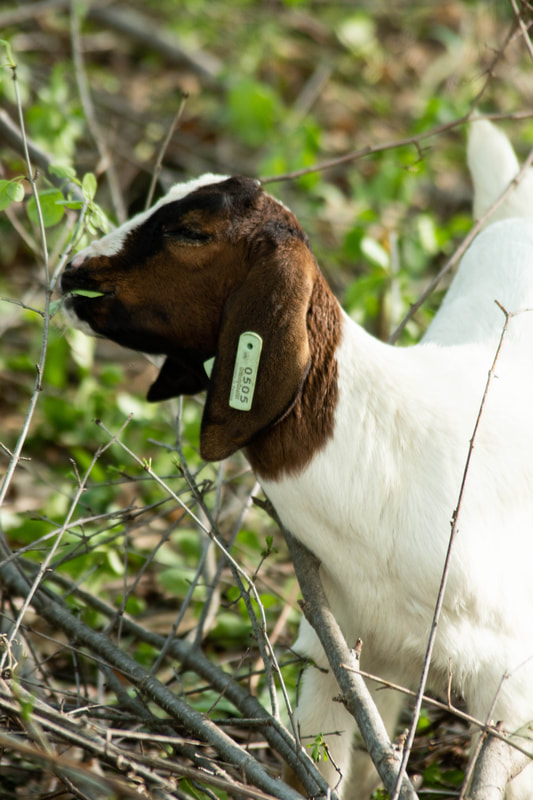
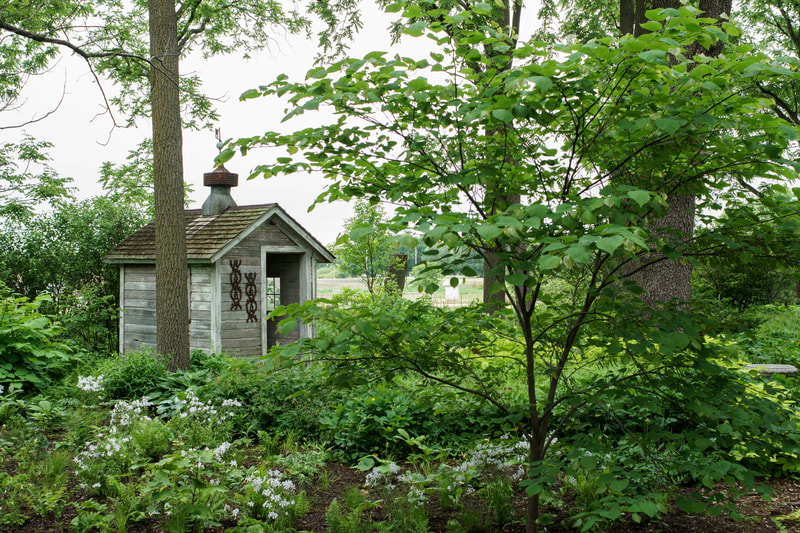
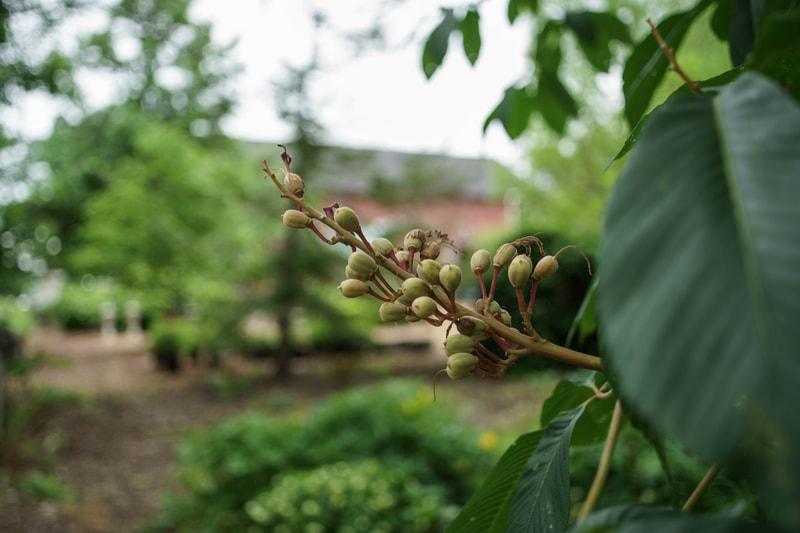
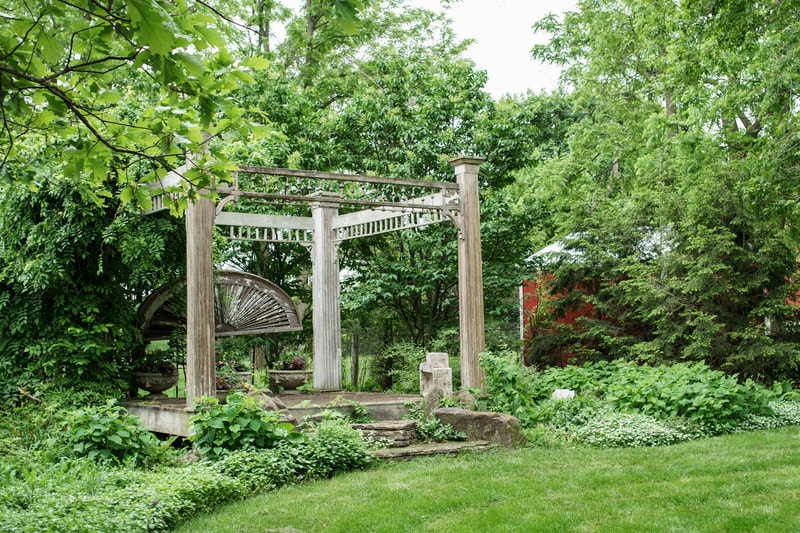
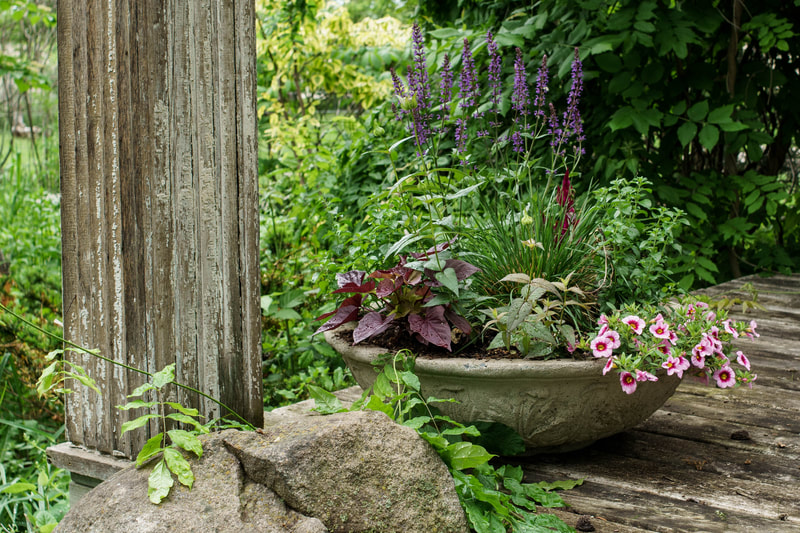
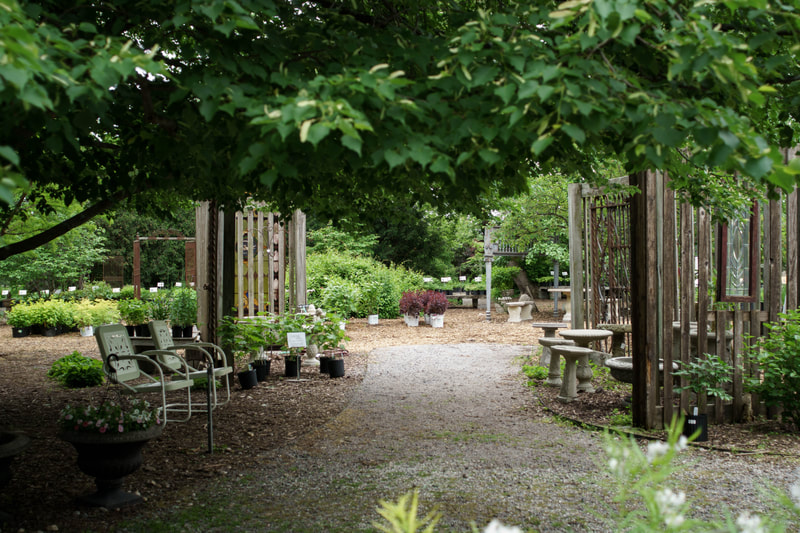
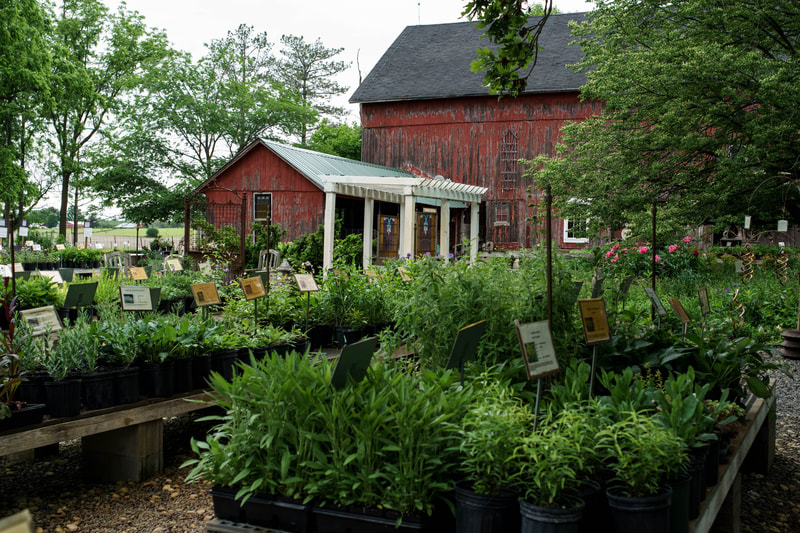

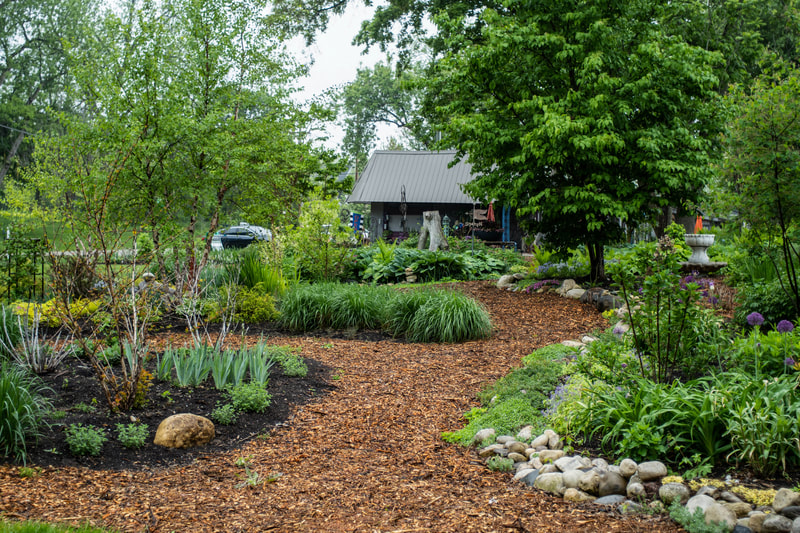
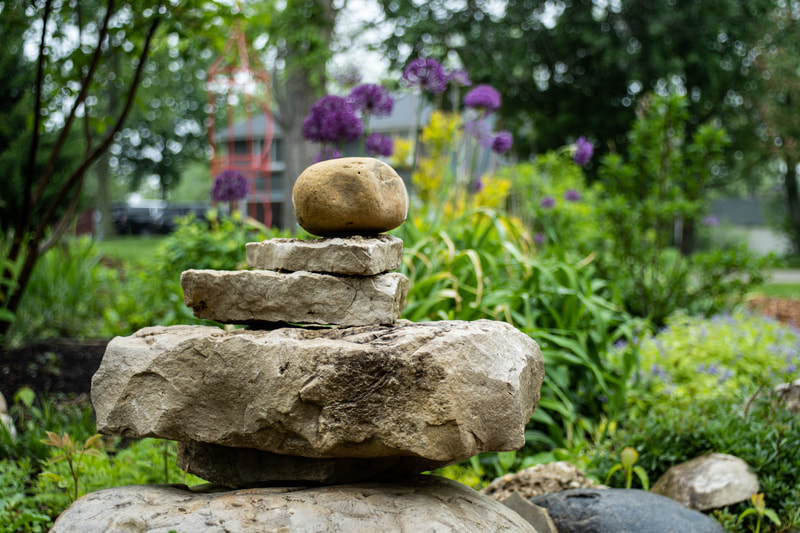

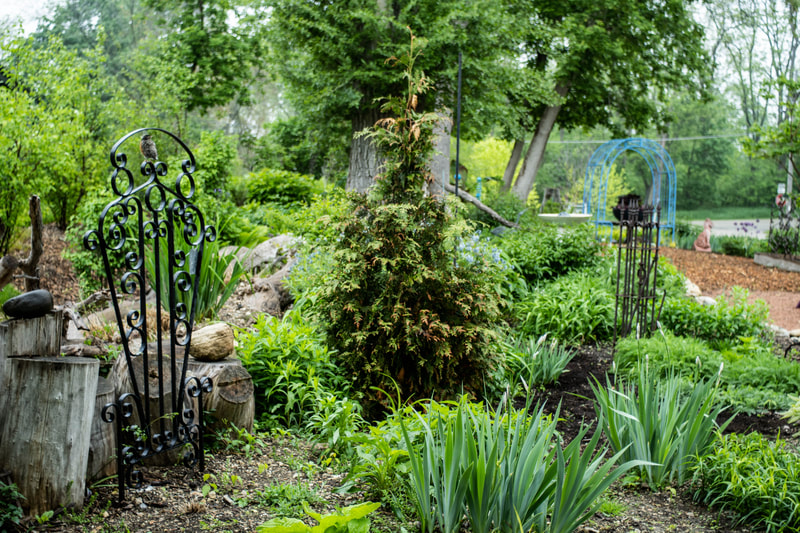
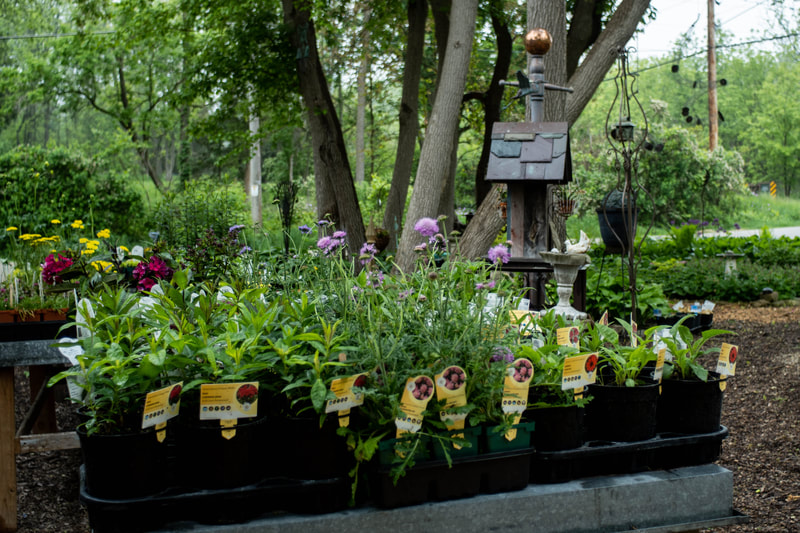
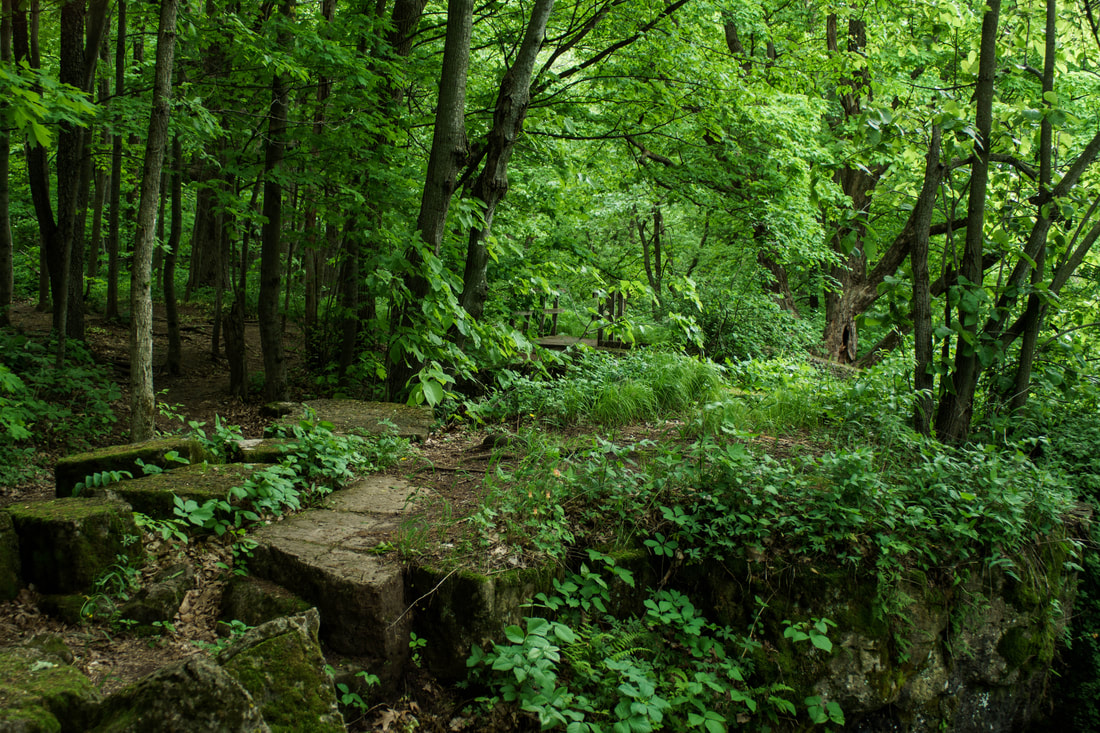

 RSS Feed
RSS Feed
